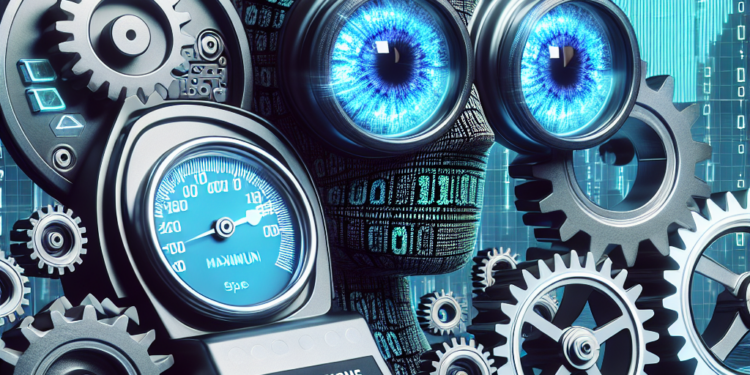Artificial Intelligence (AI) has become an integral part of our daily lives, from voice-activated personal assistants to image recognition technologies. These AI models rely on complex algorithms and vast amounts of data to make intelligent decisions and predictions. However, like any other technology, AI models require fine-tuning to ensure optimal performance.
Fine-tuning AI models involves a process of adjusting and optimizing various parameters and hyperparameters within the model to enhance its performance accuracy and efficiency. This process is crucial for ensuring that the AI model can effectively handle real-world scenarios and deliver accurate results. In this article, we will explore the significance of fine-tuning AI models and provide an overview of the key steps involved in optimizing AI models for optimal performance.
The Importance of Fine-Tuning AI Models
AI models are built using machine learning algorithms that learn from large datasets to make predictions and decisions. However, the initial training of an AI model is just the beginning of the process, as the model may not perform optimally in all situations. Fine-tuning allows developers to adjust the model’s parameters to improve its performance in specific scenarios.
There are several reasons why fine-tuning AI models is essential:
1. Improved Accuracy: Fine-tuning AI models can significantly enhance their accuracy and precision in making predictions and decisions. By adjusting parameters, developers can reduce errors and improve the model’s overall performance.
2. Customization: Fine-tuning allows developers to customize AI models to suit specific requirements and objectives. By adjusting parameters, developers can tailor the model to address specific challenges and optimize its performance for a particular use case.
3. Adaptability: Fine-tuning enables AI models to adapt to changing environments and new data. By fine-tuning the model regularly, developers can ensure that it remains relevant and effective in real-world scenarios.
4. Efficiency: Fine-tuned AI models are more efficient in terms of computational resources and processing time. By optimizing parameters, developers can reduce the model’s complexity and improve its performance efficiency.
Key Steps in Fine-Tuning AI Models
Fine-tuning AI models involves a systematic process of adjusting and optimizing various parameters to enhance the model’s performance. The following are some key steps involved in fine-tuning AI models:
1. Define Objectives: The first step in fine-tuning AI models is to clearly define the objectives and goals of the optimization process. Developers need to determine what they want to achieve through fine-tuning and how the model’s performance will be measured.
2. Select Parameters: Identify the parameters and hyperparameters within the AI model that need to be adjusted to improve its performance. Parameters are the variables that the model learns from the training data, while hyperparameters are settings that control the learning process.
3. Define Optimization Strategy: Develop an optimization strategy to fine-tune the AI model effectively. This may involve using techniques such as grid search, random search, or Bayesian optimization to explore the parameter space and identify optimal configurations.
4. Train the Model: Once the parameters and optimization strategy are defined, train the AI model using the training data. Monitor the model’s performance and adjust parameters iteratively to improve accuracy and efficiency.
5. Validate the Model: After training the model, validate its performance using a separate validation dataset. Evaluate the model’s accuracy, precision, recall, and other metrics to assess its effectiveness in making predictions and decisions.
6. Fine-Tune the Model: Based on the validation results, fine-tune the AI model by adjusting parameters and hyperparameters to further improve its performance. Continue the iterative process of training, validation, and fine-tuning until the desired objectives are achieved.
7. Test the Model: Finally, test the fine-tuned AI model using a test dataset to evaluate its performance in real-world scenarios. Measure the model’s accuracy, efficiency, and reliability to ensure that it meets the project requirements.
Challenges and Considerations in Fine-Tuning AI Models
Fine-tuning AI models is a complex and time-consuming process that presents several challenges and considerations for developers. Some of the key challenges in fine-tuning AI models include:
1. Data Quality: The quality of the training data has a significant impact on the performance of AI models. Poor-quality data can lead to inaccurate predictions and decisions, making it essential to ensure the data used for training is clean, relevant, and representative of real-world scenarios.
2. Overfitting: Overfitting occurs when an AI model performs well on the training data but fails to generalize to new data. Fine-tuning can exacerbate overfitting, necessitating techniques such as regularization and cross-validation to prevent this issue.
3. Computational Resources: Fine-tuning AI models often require significant computational resources and processing power. Developers need access to high-performance hardware and cloud computing services to train and optimize complex AI models effectively.
4. Interpretability: Fine-tuned AI models can be highly complex and difficult to interpret, making it challenging to explain their decisions and predictions. Developers should strive to build models that are both accurate and interpretable to ensure transparency and accountability.
Conclusion
Fine-tuning AI models is a crucial process for optimizing performance and ensuring the effectiveness of intelligent systems. By adjusting parameters and hyperparameters, developers can enhance the accuracy, efficiency, and adaptability of AI models to meet specific objectives and requirements. The key steps involved in fine-tuning AI models include defining objectives, selecting parameters, developing an optimization strategy, training the model, validating performance, fine-tuning the model, and testing in real-world scenarios. While fine-tuning AI models presents challenges and considerations, the benefits of optimization far outweigh the complexities, providing developers with the tools and techniques needed to build intelligent systems that deliver reliable and accurate results.













